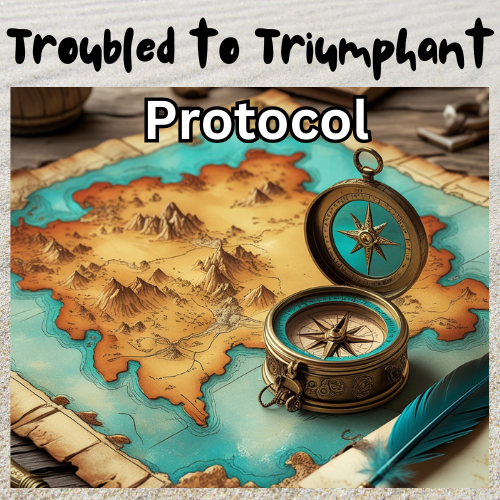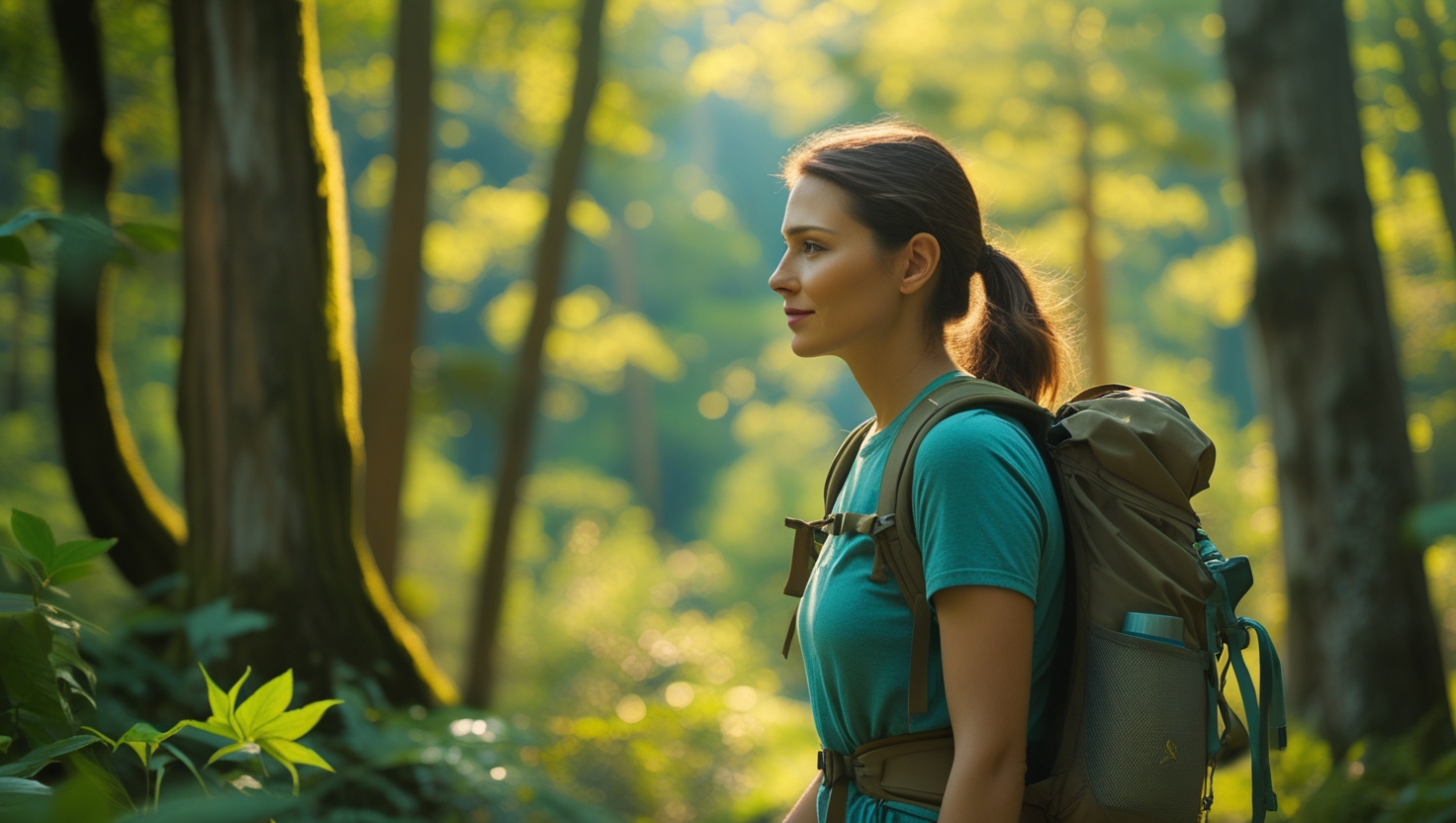Introduction: An Unforgettable Hiking Adventure
Picture this: You’re walking the Camino de Santiago through southwest France, where rolling hills unfurl like a medieval tapestry. Stone villages cling to cliffs, sunlit vineyards rustle in the gentle breeze, and ancient trails hum with the footsteps of pilgrims past. Now, imagine weaving a new thread into this timeless journey—one that invites you to slow down, breathe deeper, and let the forest itself become your guide. Discover the art of forest bathing, where the Camino’s physical character meets a soulful communion with nature.
What is Forest Bathing? (No, You Don’t Need a Towel)
Let’s clear the underbrush first: Shinrin-yoku (forest bathing) is not about lathering up with pine-scented soap or scrubbing with bark exfoliants.
Forest bathing is a practice that originated in Japan in the 1980s as a way to combat the stress and burnout of the country’s overworked population. The term translates to “taking in the forest atmosphere” or “forest immersion.” It involves spending mindful, intentional time in nature, engaging all five senses to connect with the environment and experience the healing benefits of the forest.
Unlike hiking or other nature-based activities, forest bathing is not about exertion or reaching a destination. Instead, it’s about slowing down, being present, and allowing nature to restore your body through your senses. Here’s a detailed breakdown of the practice:
- Mindful Walking: Forest bathing typically begins with a slow, mindful walk in a forest or other natural environment. The pace should be leisurely, allowing you to take in your surroundings without rushing.
- Sensory Engagement: The key to forest bathing is engaging all five senses:
- Sight: Notice the colours, shapes, and movements around you. Observe the play of light and shadow, the variety of greens in the leaves, and the intricate patterns of the forest.
- Sound: Listen to the birdsong, the rustling of leaves, the sound of water, and the wind in the trees. Allow these natural sounds to wash over you and calm your mind.
- Smell: Inhale the scent of the forest, which is rich in phytoncides, the essential oils emitted by trees. These have been shown to have a positive effect on the immune system.
- Touch: Feel the texture of the bark, the softness of the moss, the coolness of a stream. You can also simply notice the sensation of the breeze on your skin.
- Taste: While not always possible, you can taste the forest through edible plants or even the freshness of the air.
3. Breathing and Relaxation: Deep breathing exercises are often incorporated into forest bathing to help you relax and connect more deeply with the environment. Sit or lie down in a comfortable spot and simply breathe with the forest.
4. Reflection: Forest bathing often includes a period of reflection or contemplation. This can be a time to journal, meditate, or simply sit quietly and absorb the peace of the natural world.
Benefits of Forest Bathing
The benefits of forest bathing are numerous and well-documented. They can be broadly categorised into physical, mental, and emotional benefits:
Physical Benefits:
- Immune System Boost: Studies have shown that spending time in forests can increase the activity of natural killer (NK) cells, a type of white blood cell that plays a vital role in the immune system. This boost can last for up to 30 days after a forest bathing experience. One key element is phytoncides, voltaic organic compounds (VOC’s) released by trees, which have been shown to boost the immune system and increase the production of anti-cancer proteins.
- Cardiovascular Health: Forest bathing has been linked to lower blood pressure, reduced pulse rate, and decreased cortisol levels (a stress hormone).
- Respiratory Health: The air in forests is often cleaner and richer in oxygen, which can benefit the respiratory system. Additionally, the phytoncides emitted by trees have antimicrobial properties that can help protect against illness.
Mental Benefits:
- Stress Reduction: One of the most significant benefits of forest bathing is its ability to reduce stress. Numerous studies have shown that spending time in nature can lower cortisol levels and decrease sympathetic nervous system activity, promoting a state of relaxation.
- Improved Mood: Forest bathing has been linked to improved mood and decreased symptoms of depression and anxiety. The calming effects of nature can help regulate emotions and promote a sense of well-being.
- Enhanced Creativity: Spending time in nature has been shown to enhance creativity and problem-solving skills. The peaceful environment and lack of distractions can allow the mind to wander and generate new ideas.
Emotional Benefits:
- Emotional Healing: Forest bathing can provide a safe and supportive space for emotional healing. The calming atmosphere of the forest can help you process difficult emotions and gain new perspectives.
- Increased Sense of Connection: Spending time in nature can foster a deeper sense of connection to the natural world and to oneself.
- Mindfulness: Forest bathing encourages mindfulness (present-moment awareness.) By engaging the senses and focusing on the environment, you can cultivate a deeper appreciation for the beauty and wonder of the natural world.
Forest bathing is about feeling moss under your fingertips, listening to the gossip of rustling leaves, and inhaling air so crisp it could double as a spa treatment.
“But I haven’t got time to stop!” The Camino is about movement, miles, and milestones. Won’t forest bathing slow you down? Absolutely—and that’s the point. Slowing isn’t surrendering; it’s savouring. On my retreats, you have time. By alternating brisk stretches with mindful pauses, you’ll paradoxically increase stamina. Stress melts, muscles loosen, and joy bubbles up like a woodland spring. Plus, let’s be real: Your Instagram followers will prefer a photo of you grinning under a majestic oak tree to another grimacing summit selfie.
Whispering Woods: the Camino’s Green Cathedrals
For centuries, the Camino has been a metaphor for life: a path of endurance, surrender, and transformation. But what if the journey isn’t just about reaching Santiago de Compostela? What if it’s also about letting the landscape reach you? Southwest France’s stretch of the Camino—less trodden than its Spanish counterpart—offers forests that feel like sacred temples. Here, the rhythm of your boots syncs with the pulse of the land. Walking becomes a meditation, and every bend in the trail invites you to shed another layer of restlessness.
Ancient oak trees stand like green cathedral pillars, their canopies filtering sunlight into golden lace. On Gascony’s sun-dappled paths, you’ll half-expect a troubadour to emerge at any moment, strumming his lute. And then there are the sensory details: the tang of wild thyme underfoot, the chorus of crickets at dusk, the way a breeze carries the distant clang of a village church bell. These forests aren’t just scenery—they’re storytellers, steeped in Camino legends and the quiet resilience of the walkers of centuries past.
So, how do you combine forest bathing with a walking pilgrimage? Like a good French wine and cheese pairing—thoughtfully, and with joy. Just follow the signs.
“Nature offers us signposts, but they can be difficult to notice unless you are paying attention. Nature’s signposts confirm that you’re exactly where you are meant to be. You may see them over and over again—a type of plant you always seem to spot, a shrub with particularly tasty fruit, or an animal that crosses your path. Every time you see Nature’s signposts, she is reminding you that you are in conversation with her and that you’re going the right way.” ― Julia Plevin, The Healing Magic of Forest Bathing: Finding Calm, Creativity, and Connection in the Natural World
The Camino de Santiago’s Unexpected Gift
Clara, a widow from Toronto, attended one of my From Troubled to Triumphant transformational retreats Camino with a heart “as heavy as my backpack.” Grief clung to her shoulders, pressing into every step, every breath. It had been two years since she lost Michael, her husband of thirty-five years, yet the pain remained sharp, like a stone in her shoe she couldn’t shake loose. When she signed up for the walking retreat, she wasn’t sure what she was seeking—only that she needed to move, to let the road carry her forward.
The Camino had its own way of whispering to those who walked it, urging them to shed what they no longer needed. But Clara held on tightly to her sorrow, afraid that letting go meant losing Michael all over again.
One afternoon, as the path wound through an ancient oak forest, she felt an inexplicable pull. The gnarled branches stretched like open arms, the leaves murmuring in a language older than words. The air was thick with the scent of moss and woodsmoke, cool and still. Without thinking, Clara stepped off the trail and into the embrace of the trees.
She sank onto a bed of fallen leaves, her back against a towering oak. The bark was rough beneath her fingertips, grounding her. And then, as if the forest itself had unlocked something within her, the tears came. Not the quiet, measured tears she had allowed herself before, but deep, body-wracking sobs. She wept for Michael, for the life they had built, for the mornings without his laughter, for the empty chair at the kitchen table. She wept for the part of herself that had been buried with him.
The forest held her grief without judgment, without hurry. The trees stood steady, their roots deep, their branches reaching for the sky. Slowly, her sobs softened, like autumn leaves underfoot. The ache was still there—but it was no longer sharp, no longer something to be wrestled with. Instead, it had settled into something gentler, something she could carry without being crushed beneath it.
When Clara finally stood, her body felt lighter, her breath steadier. She pressed a palm against the oak in silent gratitude, then stepped back onto the path. The Camino stretched before her, winding toward the horizon, toward whatever came next. And for the first time in a long time, she was ready to walk toward it.
Into the Woods, I go… for Creative Inspiration
As I reflect on own experience of forest bathing, while walking the Camino one Sunday afternoon, I am struck by the profound impact that combining this ancient pilgrimage trail with the practice of forest bathing has had on me. It was more than just a walk through a beautiful landscape; it was a deep dive into mindfulness, re-calibration and reflection.
Forest bathing, with its emphasis on sensory engagement and present-moment awareness, amplified the already transformative experience of the Camino. My slow stroll brought new insights and a deeper appreciation for the natural world. The benefits were manifold: reduced stress, enhanced creativity, and a boost to my immune system, to name a few. But perhaps the most significant gain was the sense of connection I felt, both to nature and to myself.
This walk reminded me of the importance of slowing down, of being present, and of embracing the beauty that surrounds us. It has reminded me that renewal is always within reach, as close as the nearest forest or even a quiet corner of a park full of trees.
That is why I created my 7-day Camino walking retreats so that I can include forest bathing and wild swimming.
So, lace up your boots, open your senses, and join me here at my little farm in the southwest of France and step into the forest. Who knows what insights, what healing, what adventures await you? The world is full of possibilities, and each step you take is a step towards a more connected, more mindful, more joyful you. Hope to see you this year, and may your walk be as enriching and transformative as mine has been.
Conclusion
The Camino de Santiago and forest bathing are kindred spirits. Both ask you to trust the path, embrace the unknown, and find enlightenment in simplicity. Every step on the trail is a breath; every breath, a step into the forest’s healing embrace. So go ahead—book your retreat. After all, the best hiking adventures aren’t just about where you’re going. They’re about who you become along the way.
🌳 Buen Camino, and may the Forest be with you. 🌳
Research
Science has a habit of confirming what poets already know: Nature heals. Studies show that forest bathing lowers cortisol (stress’s pesky sidekick), boosts immunity (thanks to phytoncides—woodland essential oils emitted by trees), and even sparks creativity (Einstein did claim his best ideas came while walking). On the Camino, where blisters and fatigue can cloud your clarity, forest bathing offers moments of quiet revelation. It’s the pause between steps where you realise the trail isn’t just beneath your feet—it’s in the dappled light, the earthy scent after rain, and the way a gnarled oak seems to whisper, “Linger awhile.”
Li Q, Morimoto K, Kobayashi M, Inagaki H, Katsumata M, Hirata Y, Hirata K, Suzuki H, Li YJ, Wakayama Y, Kawada T, Park BJ, Ohira T, Matsui N, Kagawa T, Miyazaki Y, Krensky AM. Visiting a forest, but not a city, increases human natural killer activity and expression of anti-cancer proteins. Int J Immunopathol Pharmacol. 2008 Jan-Mar;21(1):117-27.
Hansen MM, Jones R, Tocchini K. Shinrin-Yoku (Forest Bathing) and Nature Therapy: A State-of-the-Art Review. Int J Environ Res Public Health. 2017 Jul 28;14(8):851.
Li Q. Effect of forest bathing trips on human immune function. Environ Health Prev Med. 2010 Jan;15(1):9-17.
Li Q. Effects of forest environment (Shinrin-yoku/Forest bathing) on health promotion and disease prevention -the Establishment of “Forest Medicine”. Environ Health Prev Med. 2022;27:43.

Author Bio: Dr Margaretha Montagu – described as a “game changer”, “gifted healer”, “guiding light” and “life-enriching author” – is an experienced medical doctor, a certified NLP practitioner, a medical hypnotherapist, an equine-assisted psychotherapist (EAGALAcertified) and a transformational retreat leader who guides her clients through life transitions – virtually, or with the assistance of her Friesian and Falabella horses, at their home in the southwest of France.
Hit the pause button and regain your footing during a From Troubled to Triumphant Retreat. Imagine walking a peaceful stretch of the Camino de Santiago, where every step helps untangle the mental clutter or spending time with gentle Friesian horses who teach you the art of mindfulness. Whether you choose to make a change or are forced to, this retreat offers the perfect blend of peace, perspective, and playful exploration to help you rise from troubled to triumphant!


